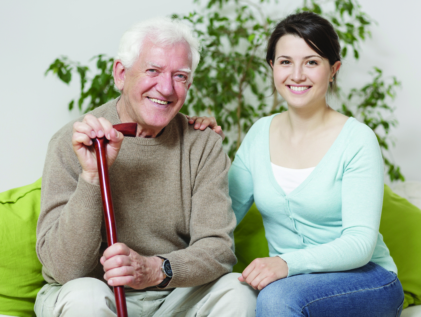Did you know, approximately one in four Americans over age sixty-five report falling each year? There is no surprise that difficulties with mobility and balance increases as we age, leading to many more falls among seniors. In fact, falls account for the highest number of accident-related deaths in the senior population. With falls also comes an increased risk of breaking a hip; a painful injury that can lead to life-threatening health complications. Recovering from a hip fracture, especially later in life, is difficult and can result in a loss of physical function, decreased social engagement, increased dependence on caregivers, and a slew of illnesses.
With ongoing increases in life expectancy, it’s fair to assume that the rate of hip fractures among seniors will rise in tandem. According to the Center for Disease Control, 300,000 seniors are hospitalized each year for hip fractures, and 95% of them are caused from a fall. Furthermore, women account for three-quarters of all hip fractures, possibly because they tend to develop osteoporosis more than men. Cognitive impairments like dementia, misuse of medication, and trip hazards can also cause falls that lead to hip fractures.
To keep yourself and your loved ones safe, we recommend:
Removing Tripping Hazards
Take a look around your home and identify any areas or items that may increase your chance of falling. Remove throw rugs and secure stray electrical cords under and behind furniture. Rearrange furniture to widen pathways for walking and remove unnecessary items such as floor plants.
Safeguarding Your Stairs
Check that all treads are free from loose boards and nails. Ensure that all staircases in your home have a handrail that is firmly attached and runs the entire length of the staircase. Consider adding non-slip tape to outdoor treads that may become slippery when wet.
Getting Screened for Osteoporosis
Osteoporosis is a condition that causes bones to lose strength and density. More than 53 million Americans either have osteoporosis or are at high risk of developing it. However, many people are unaware that they have it. Getting regular bone density screenings, exercising regularly, and increasing your calcium and vitamin D intake are all necessary steps in combatting osteoporosis.
Exercising Often
Exercising improves overall bone strength, core strength, flexibility, and joint health. The combination of these benefits can reduce the risk of falling while simultaneously providing several other health benefits. For seniors, walking, practicing Tai Chi, dancing, and light yoga are all excellent options.
Checking Your Vision
Our vision is constantly changing, and poor vision can lead to falls. Seniors must have a yearly eye exam to identify and address any prescription adjustments or changes in eye health that could impact safety.
If you believe that you or a loved one are at risk of falling and breaking a hip, please consult your family physician. They will be able to do a thorough assessment and suggest a plan of action to reduce that risk.

